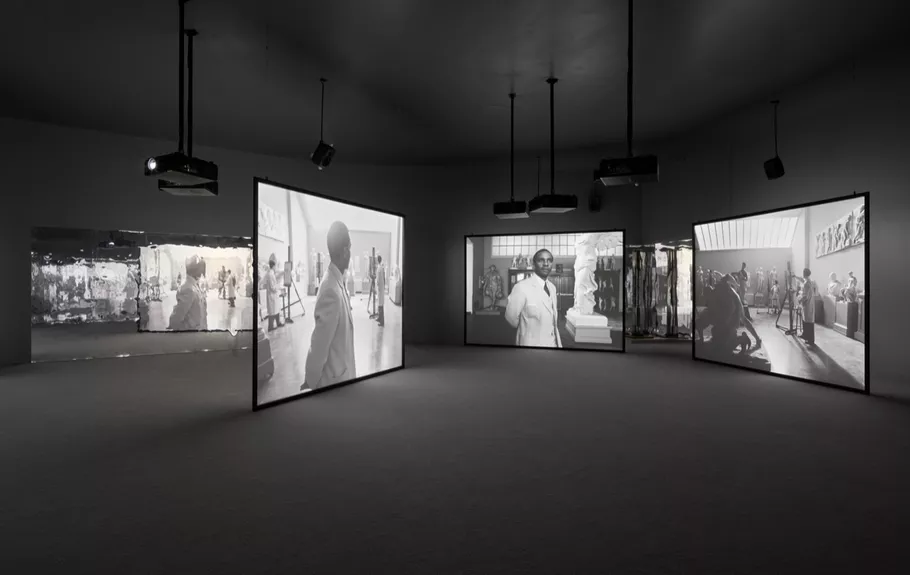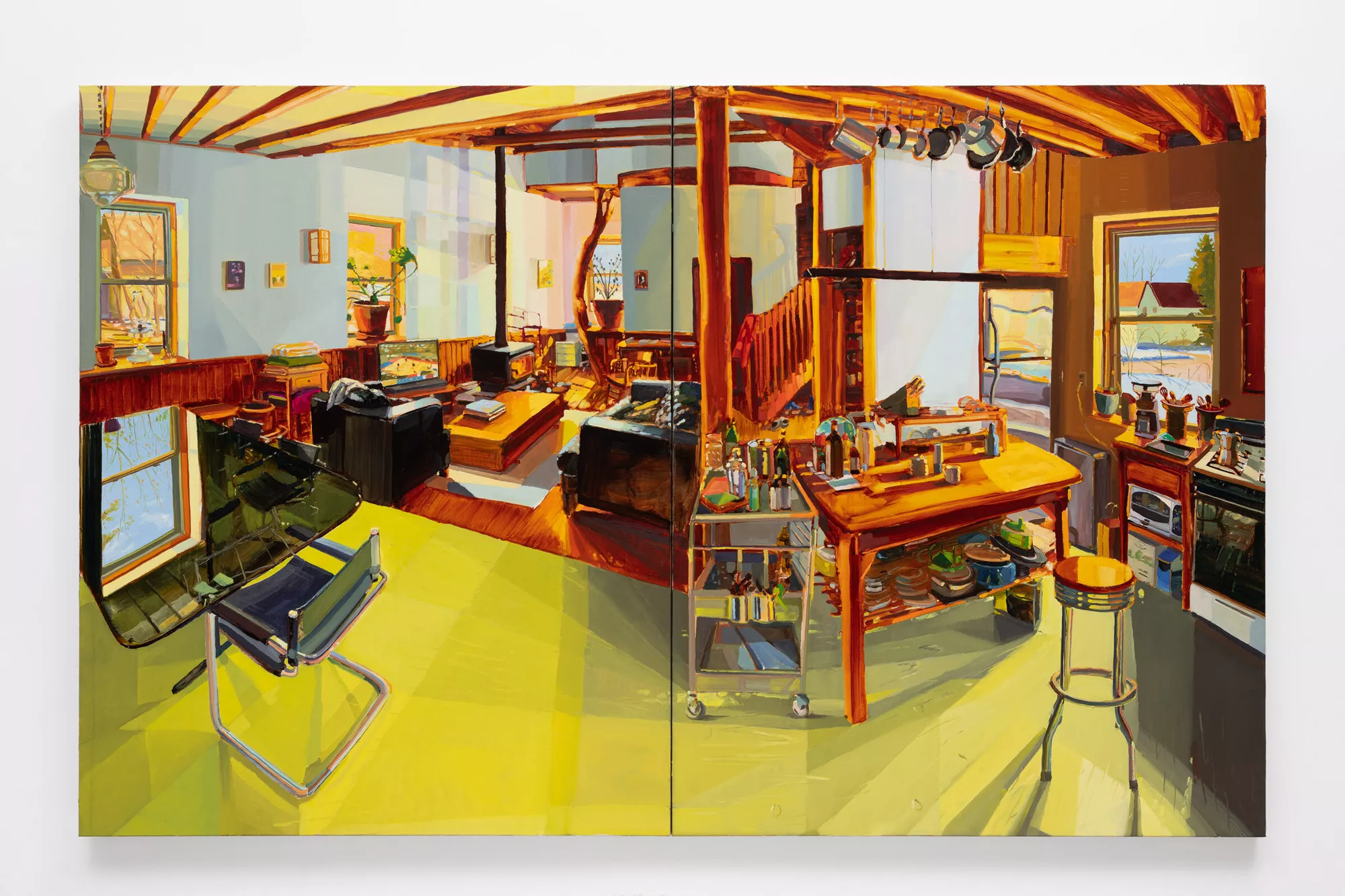Isaac Julien’s Cinematic Journey: Reimagining History and Redefining Representation at Tate Britain
Isaac Julien’s Cinematic Journey: Reimagining History and Redefining Representation at Tate Britain
- Isaac Julien’s groundbreaking exhibition at Tate Britain showcases his thought-provoking exploration of history through filmmaking, reimagining the past of Black queer individuals.
- The exhibition titled “What Freedom Means to Me” features Julien’s extensive body of work, including film, photography, installation, and performance.
- Julien’s immersive film installation, “Once Again… (Statutes Never Die) I,” transports viewers to the Harlem Renaissance, shedding light on the life of Black art historian Alain Locke and examining the connection between museums and colonial legacies.
saac Julien's thought-provoking exploration of history through filmmaking is currently on display at Tate Britain in his first major career-spanning survey in the United Kingdom. Titled "What Freedom Means to Me," the exhibition showcases Julien's extensive body of work, which includes film, photography, installation, and performance. Throughout his career spanning almost four decades, Julien has reimagined the past of Black queer individuals, offering fresh interpretations of historical narratives.
Born and based in London, Julien’s artistic practice was influenced by his involvement with Sankofa, a feminist and queer film and video collective in the 1980s. As a member of Sankofa, he collaborated on notable films such as “Dreaming Rivers” (1988) by Martina Attille and “The Passion of Remembrance” (1986), co-directed with Maureen Blackwood. However, it was Julien’s groundbreaking film “Looking for Langston” (1989) that garnered significant acclaim. This visually stunning black-and-white 16mm film reimagines the life of Harlem Renaissance poet Langston Hughes within the context of the vibrant Harlem queer ballroom culture of the 1920s. “What Freedom Means to Me” offers audiences an opportunity to engage with the entirety of Julien’s filmography.
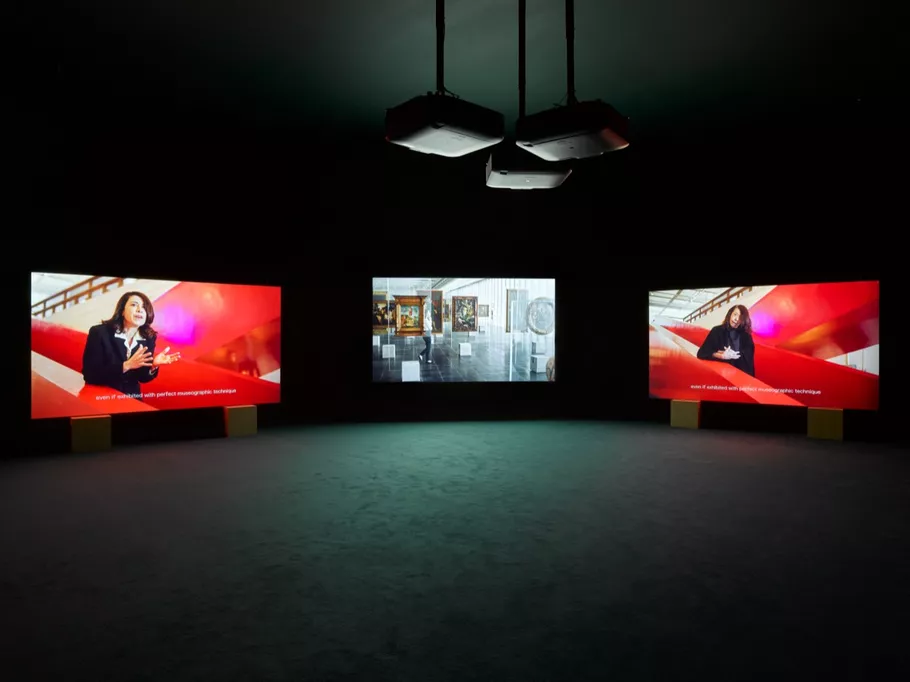
The exhibition opens with a striking installation titled “Once Again… (Statutes Never Die) I (2022).” Through this large-scale film installation, Julien transports viewers to the Harlem Renaissance once more, reimagining the life of Black art historian and philosopher Alain Locke. The installation features five floor-to-ceiling projections surrounded by mirrors, creating an immersive experience. Julien’s soulful cinematography sheds light on Locke’s life and explores the interconnectedness of museums and colonial legacies. The film delves into Locke’s art criticism on Black art in the 1920s and delves into his queer identity. While Locke is confined to the museum space, haunted by the remnants of stolen African artifacts, his double exists in intimate and sensual environments. Julien’s aim is to not only represent underrepresented narratives but also to portray these individuals as fully human, emphasizing their personal experiences and humanity.
Accompanying the exhibition is a photographic series related to “Once Again…” currently on display at Jessica Silverman in San Francisco. The series further expands on the themes explored in the film installation.
After experiencing “Once Again…” at Tate Britain, visitors enter a circular hub featuring separate passageways showcasing Julien’s other films, including “Looking for Langston,” “Vagabondia” (2000), “Western Union: Small Boats” (2007), “Ten Thousand Waves” (2010), “Lessons of the Hour” (2019), and “Lina Bo Bardi–A Marvelous Entanglement” (2019). This presentation allows visitors to seamlessly follow the trajectory of Julien’s artistic practice.
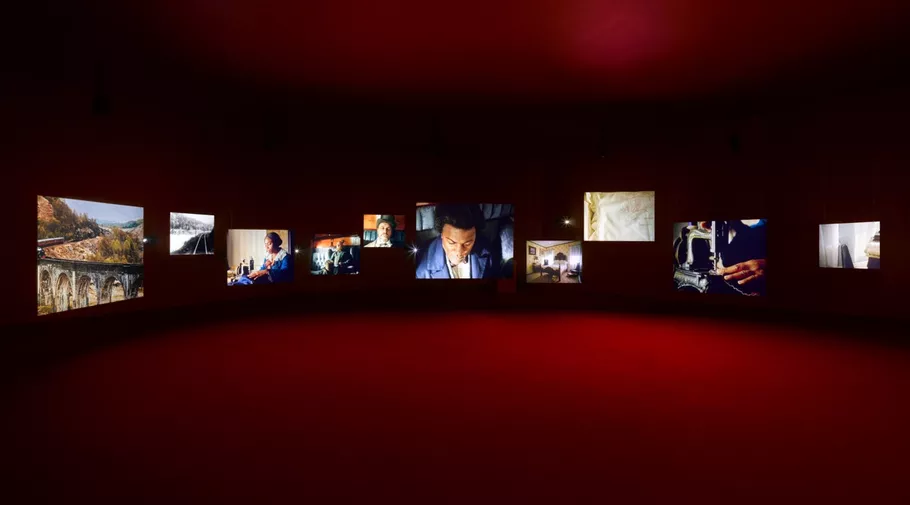
“Lina Bo Bardi–A Marvelous Entanglement” is a three-channel epic that offers a fantastical recreation of the life of Italian architect Lina Bo Bardi. The film emphasizes Bo Bardi’s significant yet often overlooked influence in shaping mid-20th-century Brutalist architecture in Brazil. Through dance and music, the film creates a dreamlike, non-linear exploration of Bo Bardi’s past, transcending traditional biographical storytelling.
The exhibition’s culmination reflects Julien’s fascination with media imagery, stemming from his involvement with Sankofa and the rise of television programming in the 1970s and ’80s. One of the earliest video works on display is “Who Killed Colin Roach?” (1983), where Julien appropriates the visual style of public broadcasting from that era to offer a poignant commentary on the police killing of Colin Roach. Through this piece, Julien showcases the power of visual media in shaping narratives and challenges its role in representing Black lives to a mass audience.
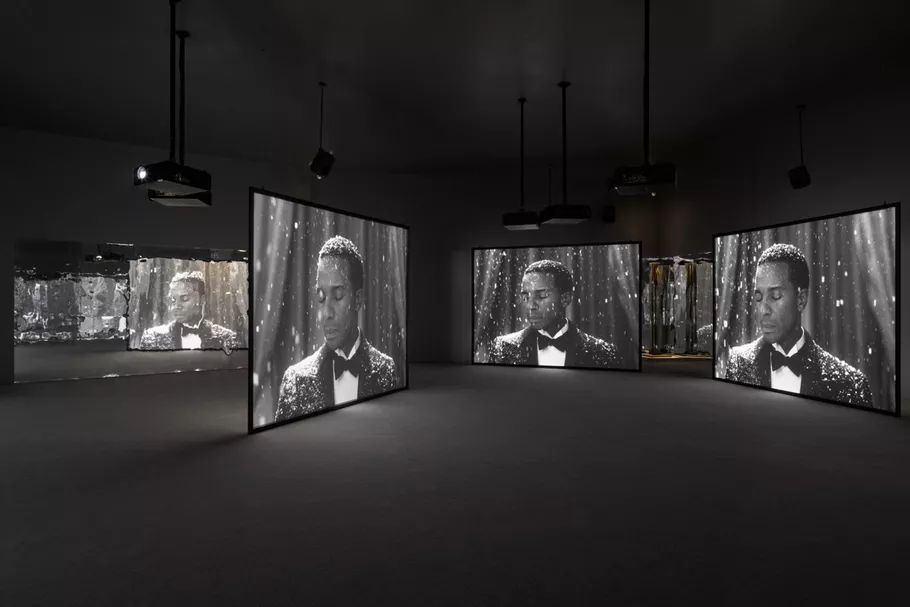
Ultimately, Julien’s work is deeply influenced by the impact of mass media in the 20th century. The exhibition at Tate Britain provides a comprehensive view of his cinematic vision, which prioritizes beauty and aesthetics. Through his films and photographs, Julien seeks not only to reshape the telling of history but also to redefine its visual representation, advocating for the possibility of an alternative world.


